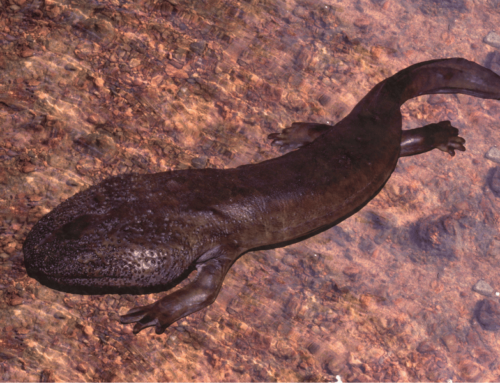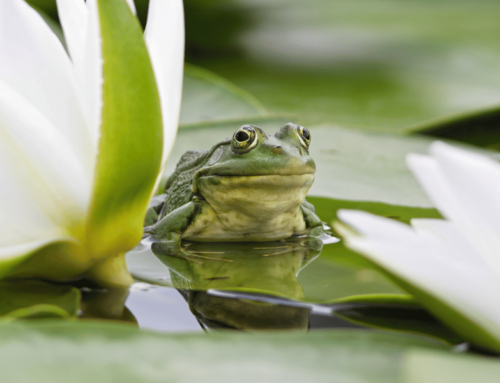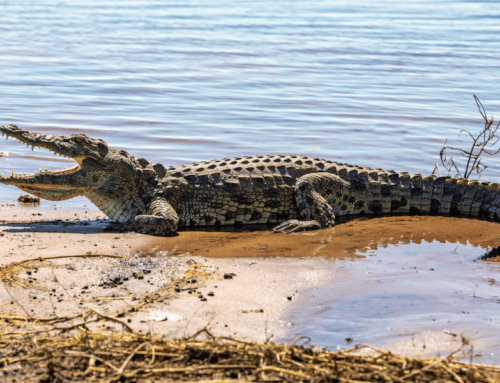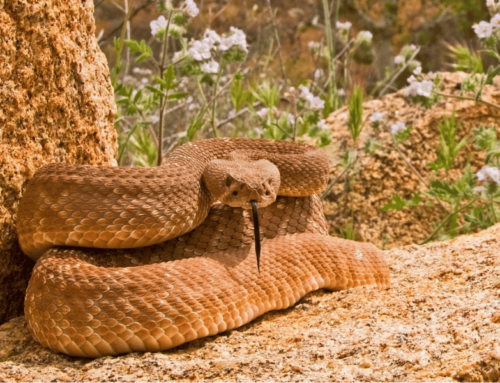Herping in the Amazon Rainforest and other South American rainforests can be great as it is one of the most biodiverse locations in the entire world. There are countless species of birds, reptiles, mammals, fish and other types of wildlife. Naturally, the Amazon is home to many of the most amazing amphibians and reptiles you can see in the entire world. This blog will cover eight of the amazing amphibians that you can see in the Amazon.
This blog post is all about 7 reptiles amphibians you can find when herping in the Amazon Rainforest.
Herping in the Amazon for Reptiles and Amphibians
Note: Do not touch or interact with any species of reptile or amphibian until you have taken the proper safety precautions. Talk to local experts to ensure you don’t do anything unsafe.
1. Poison Dart Frog

Let’s kick off this list with poison dart frogs, an iconic group of animals. These frogs are small, beautiful frogs that can be recognized by their bright, striking coloring. Despite their small size overall, these frogs are among the most poisonous types of animals on Earth.
Their appearance, much like the appearance of other brightly colored animals, is meant to warn predators. Poison dart frogs are toxic to eat and the frog’s bright, easily detectable colors signal to predators that eating them is a bad idea. This phenomenon is called “aposematism” and can be found in other animals like the blue-ringed octopus and the flamboyant cuttlefish.
They present in many different colors: blue, yellow and orange, often mixed with black patterns. In size, they don’t get bigger than 3 inches (7.6 centimeters).
This frog makes a good candidate for herping in South American rainforests due to their striking colors. Their diurnal nature also makes observing them easiser.
2. Cane Toad

If you live in Australia or certain parts of the United States, you are probably already familiar with this frog. They are invasive in many places where they have been introduced. Although, they can be found in the rainforests, they are well-adapted to different habitats.
This is a large species of toad. They look similar to other large brown-colored toads. Like other toads they have a warty-like appearance.
They feed on almost anything that is smaller than them. Common foods include beetles, ants, grasshoppers, smaller amphibians and small mammals. However, they can eat almost any edible matter they come across, including dog food, fecal matter and plants. The voracious appetite and indiscriminate eating habits are what have allowed them to take over places where they have been introduced.
Like the previously mentioned poison dart frogs, this amphibian is poisonous. If you look at the sides of their heads, you’ll see what are called “parotoid” glands. If they are squeezed, they’ll secrete deadly poison. Keep this in mind if you are planning on interacting with cane toads.
If you’re planning on herping for cane toads in their native habitat, remember that they are terrestrial. They don’t need water as much as other amphibians and won’t be found climbing trees. Anywhere that has something edible in their natural range can be a potential place to find them.
3. Glass Frogs

Glass frogs are a unique type of frog that can be found in the Amazon. They get their name from the fact that their skin is transparent. This allows you to see their organs, including their beating hearts.
Like most frogs, they are carnivores that eat insects.
Glass frogs are arboreal. When you go herping for them, look on tree surfaces. That’s where they spend the majority of their time. In size, they stay very small. The largest species only get up to 3 inches (7.6 centimeters) in length.
Note: Holding amphibians with your bare hands can be deadly for the them as they can absorb the chemicals on your skin. Nitrile gloves are recommended, as they are non-toxic to amphibians.
4. Giant Monkey Frog

The giant monkey frog is a relatively large species of tree frog that makes an interesting herping target. They get their name from their climbing methods appearing similar to that of monkeys and apes. The compounds on their skin are used medicinally, however there is no scientific evidence of its effectiveness.
These frogs are mostly green in color but they have white spots along the sides of their bodies, chest and lips. In size, they get up to 4.7 inches (11.9 centimeters).
This frog is arboreal and nocturnal.
5. Side-Necked Turtles

Side-necked turtles are another herping target that present a unique physical trait. Instead of withdrawing their heads in a straight line, the way other turtles do, they withdraw their heads facing to the side. This is where they get their name as a group.
One reason to go herping in the Amazon is seeing one of the weirder aspects of these turtles. Due to the lack of salt in the diet of butterflies in the Amazon, they supplement sodium in their diet with tears from side-necked turtles. The above photo shows this.
When herping in the amazon for side-necked turtles, you should look at river systems in the Amazon, where they can be seen basking outside the water.
6. Black Caiman

The Black Caiman is a dark-colored crocodilian that can be found in the Amazon river basin. They are closely related to alligators but this species is bigger than any alligator. They can get up to 20 feet (6.1 meters) and weigh 1000 lbs. (450 kg.).
The black caiman is considered to be an apex predator. Therefore, they don’t have to worry about getting eaten by other predators. Younger caiman however, can be eaten by other predators including jaguars and anacondas. Like most other crocodilians, they are ambush predators. They will slowly approach prey that’s by or in the water, then lunge at them when they’re close enough. Black caiman can bite down on their prey and drag them into the water, where their prey can be easily drowned.
When herping for the black caiman, remember that they can be found in bodies of freshwater. They aren’t as frequently found in fast moving rivers. Their dark colors help them with camouflage. This can make it difficult to identify them, especially in the early morning or during twilight. Mid-day makes the best time to find them. During the day, you can spot them by the water, basking in the sunlight.
7. Green Anaconda

The green anaconda is another iconic species of the Amazon Rainforest (along with many bad horror movies). It has been an animal subject to local legend and exaggerated stories for centuries due to its massive size. It is the heaviest snake in the world and one of the longest. Only the reticulated python can rival its size.
In length, they reach up to 17 feet (5.1 meters). Besides their massive size, they can be identified by their olive-green scales with large black spots. Their bellies are brighter, being more yellow than olive-green.
Anacondas are another apex predator and can feed on large prey including capybaras, large fish, tapirs and large birds. There are stories of attacks on people but this is a rare occurrence and many of the stories haven’t been verified. There are claims of green anacondas reaching 30 feet in length but there is no good evidence for this.
Like the black caiman, the green anaconda is aquatic. It’s also nocturnal, making it a difficult animal to naturally encounter, even when you’re looking for it. This doesn’t mean that it won’t happen but if you’re herping in the amazon for it, you may turn up empty-handed.
8. Green Iguana

The green iguana is a large lizard that lives in the Amazon. It is the largest known species of iguana. They reach up to 5.6 feet (1.7 meters) in length from head to tail. Besides South America, they are now invasive in parts of the southern United States.
You can identify them by their dorsal spikes and dewlaps on their necks. Their spikes extend down their backs and tails. Although, they are called green iguanas, they can have other colors as well, including bluish green, lavender, red and orange.
Despite being large enough to be a predator, green iguanas are primarily herbivores, feeding on leaves, flowers and fruits. Areas with abundant food may be more attractive to the them. More rarely they have been observed eating eggs and insects.
When herping in the amazon for green iguanas, look for them in the daytime in the trees. They are largely arboreal but can be found on the ground during cold weather to stay warm. Green iguanas can also burrow, so don’t forget that they can be found in holes as well. They are more likely to be found in trees that are near water.
Conclusion:
These amazing amphibians and reptiles are a great reason to go herping in the amazon rainforest. The amphibians and reptiles presented here do not even come close to all of the animals you can see in the rainforests of South America. There are even undiscovered species there that you can find.





